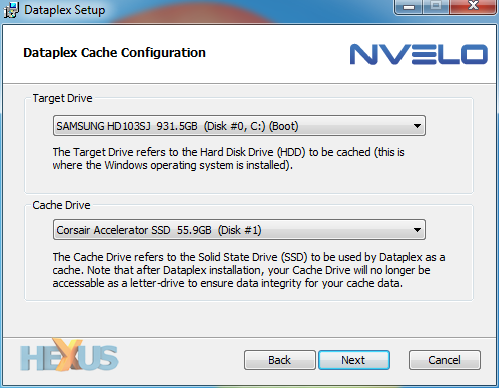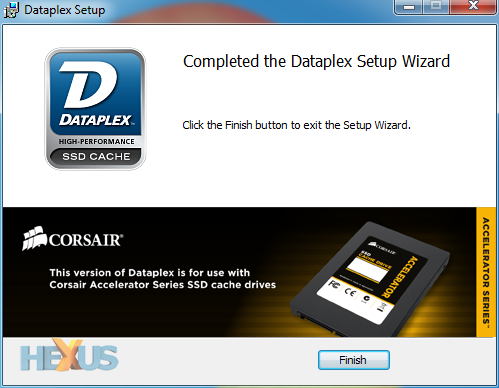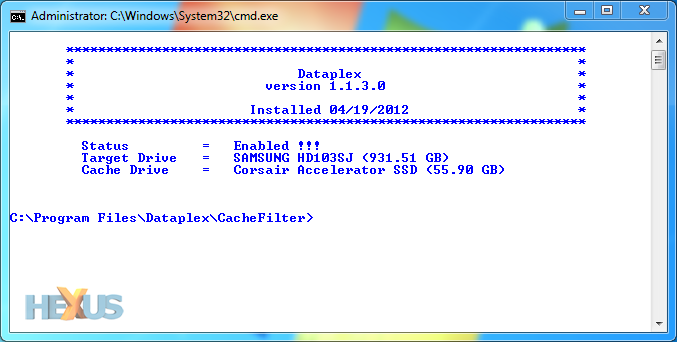Installation's a doddle
The Accelerator Series SSD is installed and configured in the same way as OCZ's Synapse. We've detailed the process in an earlier review, but it's worth a quick once over to highlight just how easy it really is.
To begin with, you attach the Accelerator SSD to a SATA power cable and a spare SATA port on your motherboard. It can be a SATA 3Gbps or SATA 6Gbps port, but remember that the drive will only ever run at SATA 3Gbps speeds.
You don't need to make any changes to your hard drive - you can leave that attached to the primary SATA port - and, as far as hardware is concerned, that's all there is to it. The Accelerator only needs plugging in, and you can then boot up the PC and install the accompanying software.
It's worth noting that Corsair's bundle includes a 2.5in to 3.5in mounting bracket, but it doesn't provide the Dataplex software on a disc, so you'll need an Internet connection to download it from Corsair's product page.
With the software downloaded, it's simply a matter of installing the Dataplex utility and ticking a few boxes. As pictured above, you begin by entering your product key - you'll find it written on the drive itself, so it's a good idea to copy it down before you plug it in.
The setup is easy to follow, but there are two provisos worth keeping in mind. Dataplex currently only supports Windows 7 and it requires an Internet connection to validate the product key. If you fail to meet those two requirements, you can't install the software.
For Windows 7 users hooked up to the web, the setup wizard holds your hand through the next couple of steps. First, it asks which drive you want to speed up (target drive) and which drive you want to use as the cache (cache drive).
Once you've made your selections, choose to install and you're done. The software will ask you to restart your PC, and once you do so, the SSD is configured as a hidden cache. You don't see it as an available volume, but you can use the Dataplex checker to ensure it's working.
Installation couldn't be much simpler, but the host PC won't always be as straightforward as our test platform - which features only a single hard disk. There could be numerous permutations, so here's a little checklist of what the Accelerator Series SSD can and cannot do.
Can
- Will act as a cache for the primary boot drive running Windows 7
- Can be used as a cache for a RAID volume (provided the volume is configured as the primary boot device)
- Will speed up your PC without having to migrate your operating system
- The SSD can be used as a regular drive and not a cache
Cannot do
- Only one cache drive can be used in a system
- Will not cache slave hard drives
- Does not support hard drives larger than 2TB in capacity
Worth remembering, also, that the cache doesn't provide an increase in capacity. Use it in conjunction with a 1TB hard disk, and you'll still have 1TB of storage - the cache is entirely invisible to the user. It acts as a go-between and dynamically caches frequently-used data for quick access and is designed to run in a write-back configuration, this means that data is always written to the high-speed cache first, before moving to the slower hard disk.
















